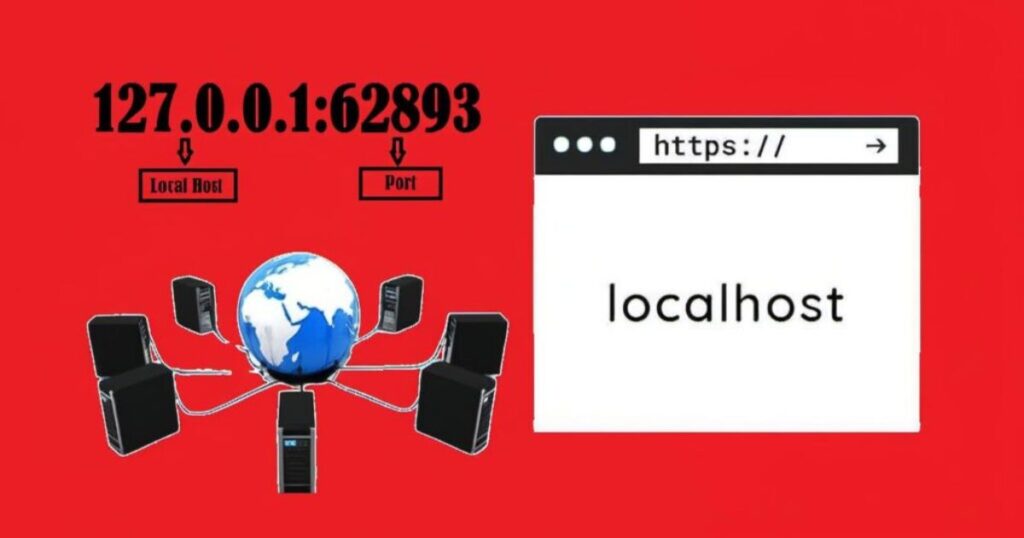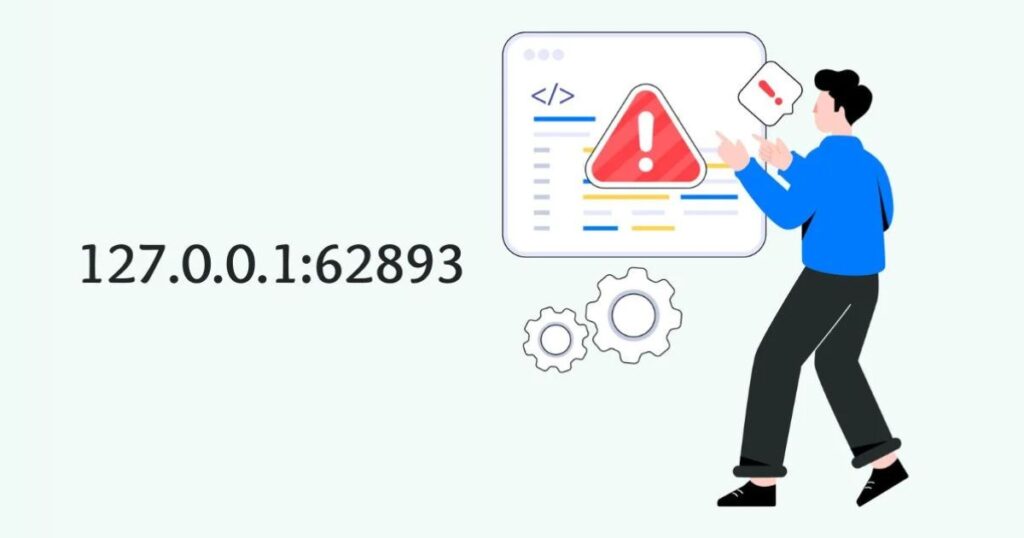Have you ever encountered the cryptic string “127.0.0.1:62893” and felt like you were decoding an alien message? Don’t worry, you’re not alone! This seemingly mysterious combination of numbers and dots is actually a key player in the world of networking and software development.
In this comprehensive guide, we’ll unravel the secrets of this loopback address and port number combo, explore its importance in network fundamentals, and provide you with a handy troubleshooting guide for when things go awry.
Value In Knowing Network Fundamentals
Before we dive into the specifics of 127.0.0.1:62893, let’s take a moment to appreciate why understanding network fundamentals is crucial, even if you’re not a tech wizard.
Imagine you’re trying to build a house without knowing the basics of construction. You might end up with a wobbly structure that collapses at the first gust of wind! Similarly, in the digital world, a solid grasp of networking basics can be the difference between a smooth-running system and a frustrating mess of error messages.
Here are some real-world scenarios where network knowledge can save your bacon:
- Troubleshooting internet connectivity issues
- Setting up a secure home network
- Optimizing online gaming performance
- Collaborating effectively in remote work environments
- Understanding and mitigating cybersecurity risks
By understanding concepts like IP addresses, port numbers, and network interfaces, you’ll be better equipped to navigate the increasingly connected world we live in. Plus, it’s a great party trick to impress your tech-savvy friends!
Summary Of The Subject: 127.0.0.1:62893

Now, let’s break down this mysterious code:
- 127.0.0.1: This is a special IP address known as the loopback address or localhost.
- 62893: This is a port number, which acts as a specific endpoint for communication.
When combined, 127.0.0.1:62893 represents a local address and port that your computer uses for internal communication. It’s like having a secret clubhouse inside your own machine where different programs can meet and exchange information.
This combination might pop up in your life when you’re:
- Developing and testing web applications
- Configuring network services
- Troubleshooting connection issues
- Setting up local servers for various purposes
Understanding 127.0.0.1:62893 is vital for anyone involved in software development, network administration, or even just tinkering with home networking projects.
What Is 127.0.0.1? (Loopback Address)
Imagine having a magical mirror that lets you talk to yourself. That’s essentially what 127.0.0.1 is in the digital world! This loopback address, also known as localhost, is a special IP address that always refers to the current device you’re using.
“Localhost is like a digital home base – it’s always there, always reliable, and always points back to you.”
Anonymous Network Engineer
Here’s why 127.0.0.1 is so special:
- It’s reserved: The entire 127.0.0.0/8 block is set aside for loopback purposes.
- It’s universal: Every device with IP networking has this address.
- It’s efficient: Traffic sent to this address never leaves your device, making it perfect for testing.
Common uses for 127.0.0.1 include:
- Local testing of web servers and applications
- Running development environments
- Inter-process communication on a single machine
- Network interface testing
Fun fact: While 127.0.0.1 is the most commonly used loopback address, any address in the 127.0.0.0 to 127.255.255.255 range will work as a loopback address!
What 127.0.0.1:62893 Can Do for You?
Now that we understand the individual components, let’s explore the superpowers of 127.0.0.1:62893 when used together:
- Isolated Testing Environment: Develop and test applications without affecting or being affected by external networks.
- Security: Run services locally without exposing them to the outside world.
- Performance Testing: Measure application performance without network latency interference.
- Debugging: Easily troubleshoot network-related issues in a controlled environment.
- Learning Platform: Experiment with network protocols and services safely.
Real-life scenario: Sarah, a budding web developer, uses 127.0.0.1:62893 to test her new e-commerce site before deploying it to a live server. This allows her to iron out bugs and optimize performance without risking her clients’ data or experience.
How to Use 127.0.0.1:62893

Ready to harness the power of this local address? Here’s a step-by-step guide to get you started:
- Choose your application or service (e.g., a web server).
- Configure it to listen on 127.0.0.1 and a specific port (like 62893).
- Start the application or service.
- Connect to it using 127.0.0.1:62893 in your browser or appropriate client.
Pro Tip: Many development environments use localhost by default, so you might not even need to configure anything!
Here’s a simple example using Python to create a basic web server:
python
Copy
from http.server import HTTPServer, SimpleHTTPRequestHandler
def run(server_class=HTTPServer, handler_class=SimpleHTTPRequestHandler):
server_address = (‘127.0.0.1’, 62893)
httpd = server_class(server_address, handler_class)
print(“Server running at http://127.0.0.1:62893/”)
httpd.serve_forever()
if __name__ == ‘__main__’:
run()
Run this script, and you’ll have a local web server accessible at http://127.0.0.1:62893/!
Safety Concerns
While using 127.0.0.1:62893 is generally safe, there are some security concerns to keep in mind:
- Firewall Settings: Ensure your firewall is configured correctly to prevent unauthorized access.
- Application Security: Even local applications can have vulnerabilities, so practice secure coding.
- Port Conflicts: Be aware of which ports are in use to avoid conflicts with system services.
Best practices for safe usage:
- Regularly update your applications and operating system
- Use strong authentication for any services running locally
- Monitor your system for unusual activity
- Avoid running unnecessary services on localhost
Remember, security is a journey, not a destination. Stay vigilant and keep learning!
The Step-by-Step Troubleshooting Guide
Even the most reliable systems can hiccup sometimes. When you encounter issues with 127.0.0.1:62893, follow this troubleshooting guide to get back on track:
- Check if the service is running
- Use the netstat command to verify the service status:
Copy
netstat -an | findstr :62893 - On Unix-like systems:
Copy
lsof -i :62893
- Use the netstat command to verify the service status:
- Look for port conflicts
- Ensure no other service is using port 62893
- Try changing the port if necessary
- Verify firewall settings
- Check your firewall rules to allow traffic on port 62893
- Temporarily disable the firewall to test if it’s the cause
- Review application settings
- Double-check your application’s configuration
- Ensure it’s set to listen on 127.0.0.1:62893
- Restart network services
- On Windows:
Copy
netsh winsock reset - On Unix-like systems:
Copy
sudo systemctl restart networking
- On Windows:
- Update or reinstall network drivers
- Check for driver updates in your system settings
- If issues persist, consider reinstalling the network drivers
Remember, patience is key when troubleshooting. Take it step by step, and you’ll likely find the solution!
FAQs
Can my browser make an HTTP local request if I am not connected to a network?
Absolutely! Your localhost (127.0.0.1) is always available, even when you’re offline. This is incredibly useful for:
- Developing web applications without an internet connection
- Testing websites in a controlled environment
- Running local services that don’t require internet access
It’s like having a mini-internet inside your computer!
How do IPv6 addresses differ from localhost addresses?
Great question! While both are types of IP addresses, they serve different purposes:
| Feature | IPv6 Address | Localhost Address |
| Format | 128-bit (e.g., 2001:0db8:85a3:0000:0000:8a2e:0370:7334) | Usually 32-bit (127.0.0.1) |
| Purpose | Global communication | Local communication |
| Scope | Worldwide | Within the device |
| Example | 2001:0db8::1 | 127.0.0.1 |
Interestingly, IPv6 also has its own localhost address: ::1. So, whether you’re using IPv4 or IPv6, you’ll always have a way to talk to yourself!
Can I block a website using a local host address? If yes, in what manner?
Indeed you can! This technique is often used for productivity or security purposes. Here’s a quick guide:
- Open your hosts file:
- Windows: C:\Windows\System32\drivers\etc\hosts
- Mac/Linux: /etc/hosts
- Add an entry like this:
Copy
127.0.0.1 www.distractingwebsite.com - Save the file (you might need administrator privileges)
- Flush your DNS cache:
- Windows: ipconfig /flushdns
- Mac: sudo killall -HUP mDNSResponder
- Linux: sudo systemd-resolve –flush-caches
Now, attempts to access www.distractingwebsite.com will be redirected to your localhost, effectively blocking it.
Note: Use this power responsibly and be aware of any legal or ethical considerations in your jurisdiction.
Conclusion
Understanding 127.0.0.1:62893 might seem like a small piece of the puzzle, but it’s a gateway to a deeper comprehension of how our digital world functions. From local testing to software development, this humble address plays a crucial role in shaping the internet as we know it. By mastering concepts like loopback addresses, port numbers, and network fundamentals, you’re better equipped to navigate the increasingly complex digital landscape.
The world of networking is vast and ever-changing. Keep experimenting, learning, and don’t be afraid to dive deeper into topics that pique your interest. Who knows? The next big innovation in networking might come from you!

I’m a professional web content writer with five years of experience. My expertise spans various topics, which I explore on my blog, “worldhubdigi.com.” I’m passionate about sharing global insights and practical knowledge with my readers. Through my writing, I aim to inform, inspire, and engage. Join me on this journey of discovery and learning!